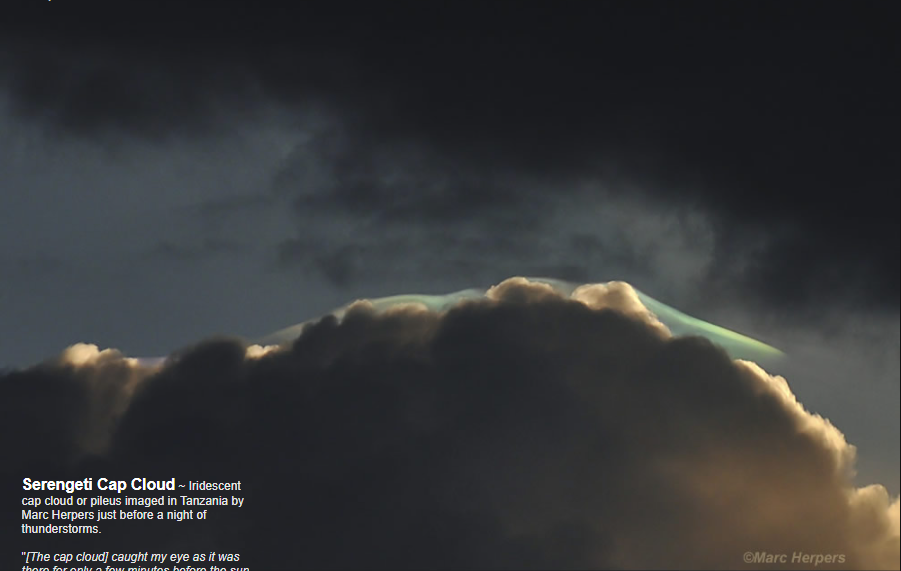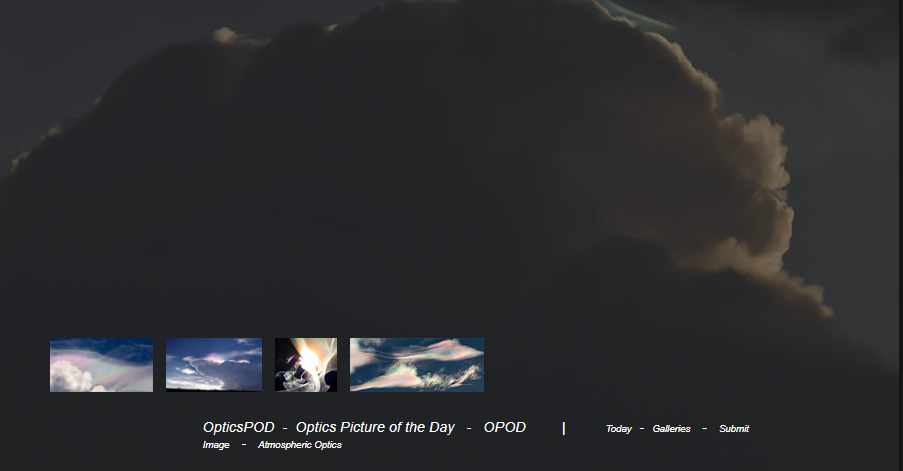Caps
Caps: The Fascinating Phenomenon in Atmospheric Optics
Atmospheric optics never ceases to amaze us with its captivating displays of natural phenomena. One such phenomenon is the formation of cap clouds, also known as pileus clouds. These ethereal formations appear as a delicate "cap" atop towering thunderclouds, adding an enchanting touch to the ever-changing sky. In this article, we will delve deeper into the intriguing world of cap clouds, exploring their formation, unique characteristics, and the stunning visual spectacle they offer.
When warm air within a thundercloud rises vigorously, it pushes layers of moist air above it to even higher altitudes. As this air ascends, it expands and cools. If the cooling is significant enough, the moisture within the air condenses to form a pileus or cap cloud. These cap clouds often appear as a thin, lenticular-shaped layer sitting atop the towering cumulonimbus clouds.
One of the most remarkable aspects of cap clouds is their vibrant display of colors. The droplets within the cloud are formed simultaneously, resulting in identical histories and similar sizes. This synchronized formation creates ideal conditions for a breathtaking phenomenon called iridescence. Iridescence occurs when sunlight interacts with individual droplets in the cap cloud, causing diffraction of light and resulting in a stunning display of shimmering colors.
Capturing the beauty of cap clouds is no easy feat, as these ephemeral formations can vanish within minutes. However, talented photographers like Marc Herpers have managed to freeze these captivating moments in time. Marc's photograph of an iridescent cap cloud in Tanzania showcases the mesmerizing green hues that adorned the sky just before a night of thunderstorms. It serves as a testament to the transient yet enchanting nature of cap clouds.
To truly appreciate the phenomenon of cap clouds, it is essential to understand the science behind their formation and optical properties. As the warm air rises within a thundercloud, it undergoes adiabatic expansion, which leads to cooling. When the air reaches its dew point temperature, moisture condenses into tiny water droplets or ice crystals, forming the cap cloud. These droplets are small and uniform in size, contributing to the cloud's thin and translucent appearance.
The combination of uniform droplet size and thinness creates an ideal environment for the occurrence of iridescence. Iridescence is a result of the diffraction of light by individual droplets within the cloud. As sunlight interacts with these droplets, it bends and scatters, producing a spectrum of colors. The specific colors observed depend on the droplet size and the angle at which sunlight interacts with the droplets.
It is important to note that cap clouds are just one example of the incredible diversity within atmospheric optics. From shimmering rainbows to glowing halos, our atmosphere never ceases to surprise us with its ability to transform light into breathtaking displays. Each optical phenomenon offers a unique glimpse into the intricate workings of nature, reminding us of the beauty and complexity that surrounds us.
In conclusion, cap clouds are a captivating phenomenon within atmospheric optics that add an enchanting touch to our skies. These delicate "caps" form above towering thunderclouds when warm air pushes moist air to higher altitudes, resulting in condensation and the creation of a thin, lenticular-shaped cloud. The synchronized formation of droplets within cap clouds leads to the occurrence of iridescence, where sunlight interacts with individual droplets, creating a mesmerizing display of shimmering colors. While cap clouds may be transient in nature, their beauty serves as a reminder of the awe-inspiring wonders that unfold above us in the ever-changing atmosphere.



Serengeti Cap Cloud ~ Iridescent cap cloud or pileus imaged in Tanzania by Marc Herpers just before a night of thunderstorms.
".The cap cloud. caught my eye as it was there for only a few minutes before the sun set completely, showing this beautiful green" ©Marc Herpers, shown with permission.
The warm air of thunder clouds boils upwards. It pushes layers of moist air above it to even higher altitudes. As that air rises, it expands and cools. If it cools enough its moisture condenses out to form a pileus or 'cap' cloud.
Pileus often shines with colour because its droplets are all formed at the same time. They thus have identical histories and similar sizes. Furthermore the cloud is thin. These are ideal conditions for bright iridescence - diffraction by individual droplets.
Note: this article has been automatically converted from the old site and may not appear as intended. You can find the original article here.
Reference Atmospheric Optics
If you use any of the definitions, information, or data presented on Atmospheric Optics, please copy the link or reference below to properly credit us as the reference source. Thank you!
-
<a href="https://atoptics.co.uk/blog/caps/">Caps</a>
-
"Caps". Atmospheric Optics. Accessed on November 26, 2024. https://atoptics.co.uk/blog/caps/.
-
"Caps". Atmospheric Optics, https://atoptics.co.uk/blog/caps/. Accessed 26 November, 2024
-
Caps. Atmospheric Optics. Retrieved from https://atoptics.co.uk/blog/caps/.